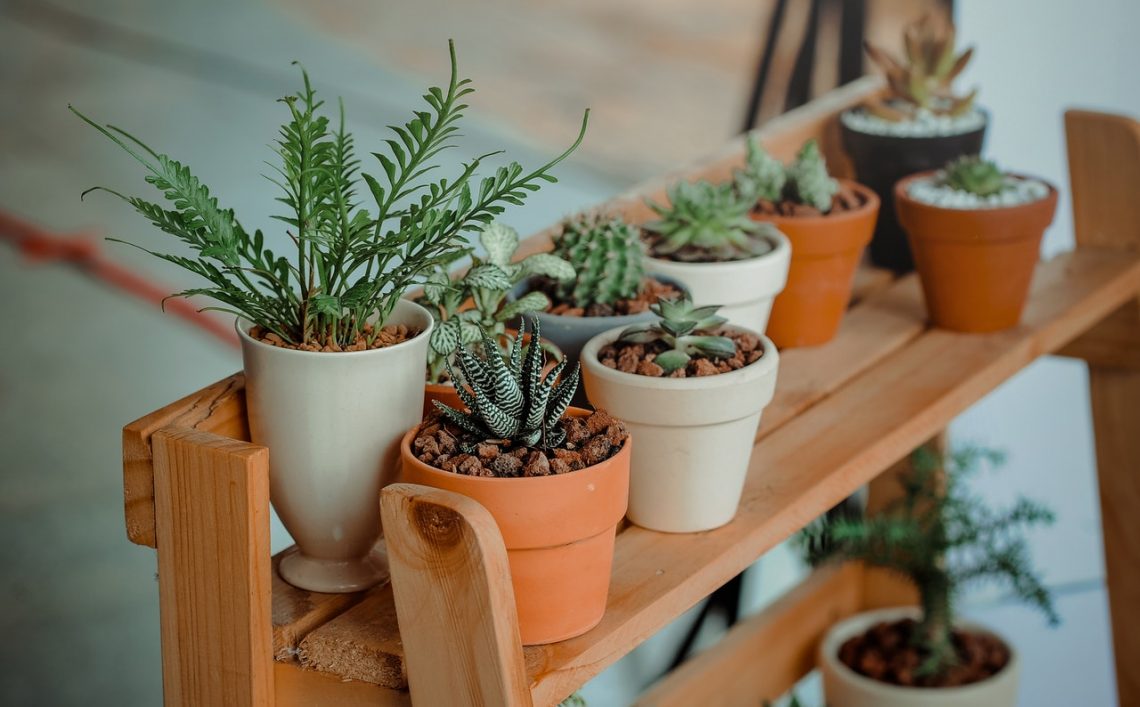
Buy These Air Purifying Plants to Live In A Healthier Home This Summer
Our cities have been plagued by abnormal air pollution. The situation has now become unavoidable due to the smoke released by our vehicles and the use of plastics in almost everything we use. Let us learn about the plants that release oxygen and purify the air from harmful toxins in order to enjoy the fresh air at home.
How do plants purify the air?
Air-purifying plants are nature’s own filtration system, enhancing indoor air quality by absorbing and neutralizing harmful pollutants. They do this through a process called photosynthesis, during which plants absorb carbon dioxide and release oxygen. Additionally, some indoor plants can also remove toxins such as formaldehyde, benzene, and ammonia from the air through their leaves and roots. This natural air-cleansing ability can help reduce indoor air pollution and create a healthier living environment. These plants not only contribute to cleaner air but also bring a touch of greenery and tranquility to your living space. So what are some common house plants that lend to better air? Let’s find out.
Peace Lily
Being one of the most common house plants the white-flowered beauty is also helpful in combating air pollution. Peace lily or Spathiphyllumblooms grows throughout the year by starting its life journey at the beginning of summer. Although you will have to work a bit hard in keeping the seeds moist without overwatering the plant yet will remove the most toxins from the air in return. The pollutants that are purified are formaldehyde, xylene, ammonia, benzene, toluene, and trichloroethylene.
English Ivy
Also known as Hedra Helix, English Ivy can easily climb up to 20 to 30 meters on trees. The evergreen plant is a good shade for combating direct sunlight while cooling the area beneath. Due to its shading properties, the plant is great for buildings and balconies this summer. Moreover, it is developed as an ornamental plant which is toxic for cats and dogs. It purifies pollutants like formaldehyde, xylene, benzene, toluene, and trichloroethylene.
Florist’s Chrysanthemum
The perennial plant is popular for bringing from the Asteraceae family and due to its two names- Chrysanthemum morifolium and chrysanthemum. It is used for its unmatchable flourishing tide of colours that brings in joy and liveliness. The flower is part of a celebration in Japan named the “Festival of Happiness”. Their blooming period starts in the autumn, and you can easily find them in the local market by the name “mum”. The plant stands tall with respect to Peace Lily for removing the highest number of toxins from the air. It removes formaldehyde, xylene, ammonia, benzene, toluene, and trichloroethylene.
Snake Plant
Also known as “mother-in law’s tongue” the variegated snake plant is one of the hardier indoor plants. It takes its name from its straight growth in a serpentine manner. The plant is easily identifiable due to the silvery-white stripes on the leaf margins. You must not go over water the plant and should place it in a low light area with little too irregular watering.
Take care of your pets as it is toxic to cats and dogs. It is capable of removing pollutants like formaldehyde, toluene, benzene, xylene, and trichloroethylene.
Devil’s Ivy (Money plant)
Popular throughout the world as a money plant and golden pothos the plant grows easily in almost all locations. Devil’s Ivy is long, and the trailing stems grow on while living a long life. It is important to know that the stems become the plant’s roots. The plant expresses its beauty through its botched yellow leaves with green hues around. It eliminates pollutants like toluene, benzene, xylene, and formaldehyde.
There are many more plants that are capable of removing toxins. Majority of them are easily available and can be grown in homes and offices. They are also helpful in minimizing cases of asthma and other breathing problems.
How does clean air make the home healthier?
Clean air is a fundamental aspect of creating a healthier home, and its advantages go beyond just physical well-being. Inhaling fresh, clean air can lead to better sleep quality, reduced stress levels, and improved cognitive function. It can also help minimize allergy symptoms and respiratory issues, providing a more comfortable and productive lifestyle. During the summer, when windows are often open to capture the warm breeze, maintaining clean air becomes especially crucial to prevent the intrusion of outdoor pollutants. Whether achieved through the use of air-purifying plants, air purifiers, or other methods like Oxygenation Systems, prioritizing clean air in your home ensures that you and your family can enjoy a healthier and more pleasant living space not only during the summer months but throughout the entire year.
Where should these plants be ideally placed?
To fully harness the air-purifying benefits of indoor plants and create a healthier home environment this summer, strategic placement of these green companions is crucial. Consider placing plants like snake plants, spider plants, and peace lilies in key areas where they can thrive and maximize their air-cleansing capabilities. Bedrooms, living rooms, and home offices are ideal spaces for these plants, as they not only enhance air quality but also contribute to a refreshing aesthetic.
Additionally, incorporating greenery into your sunroom can be ideal for both aesthetics and air purification. If you already have a sunroom or if you’re considering adding a sunroom to your home, consulting with experienced sunroom contractors in Ottawa, ON, or elsewhere, can provide valuable insights into creating a sunlit sanctuary that complements your plant collection, fostering a healthier and more vibrant living space.
How else can home air be purified?
While air-purifying plants are a fantastic addition to your home, they might not be sufficient to tackle all indoor air quality issues. To complement their efforts, consider other methods of air purification. One effective option is using air purifiers equipped with HEPA filters, which can capture fine particulate matter, allergens, and even some airborne bacteria. Additionally, for specific problems like mold odors, particularly in humid summer conditions, professional mold odor removal services may be necessary to address the root cause and eliminate the persistent odor. A combination of these methods, along with good ventilation practices and regular cleaning, can help ensure that your home’s air is fresh and healthy throughout the summer and beyond.
- 5 Ways to Make Your Profile Stand Out on LinkedIn and Get Recruited - 2nd July 2024
- 3 Ways to Make Your Hotel Stand Out Online from the Competition - 2nd July 2024
- How to Build a Brand that Resonates and Leaves a Lasting Impression - 20th January 2024
You May Also Like

How to design and maintain a Southeast Asian style garden
24th November 2020
7 Steps of the Website Design Process
29th December 2022

